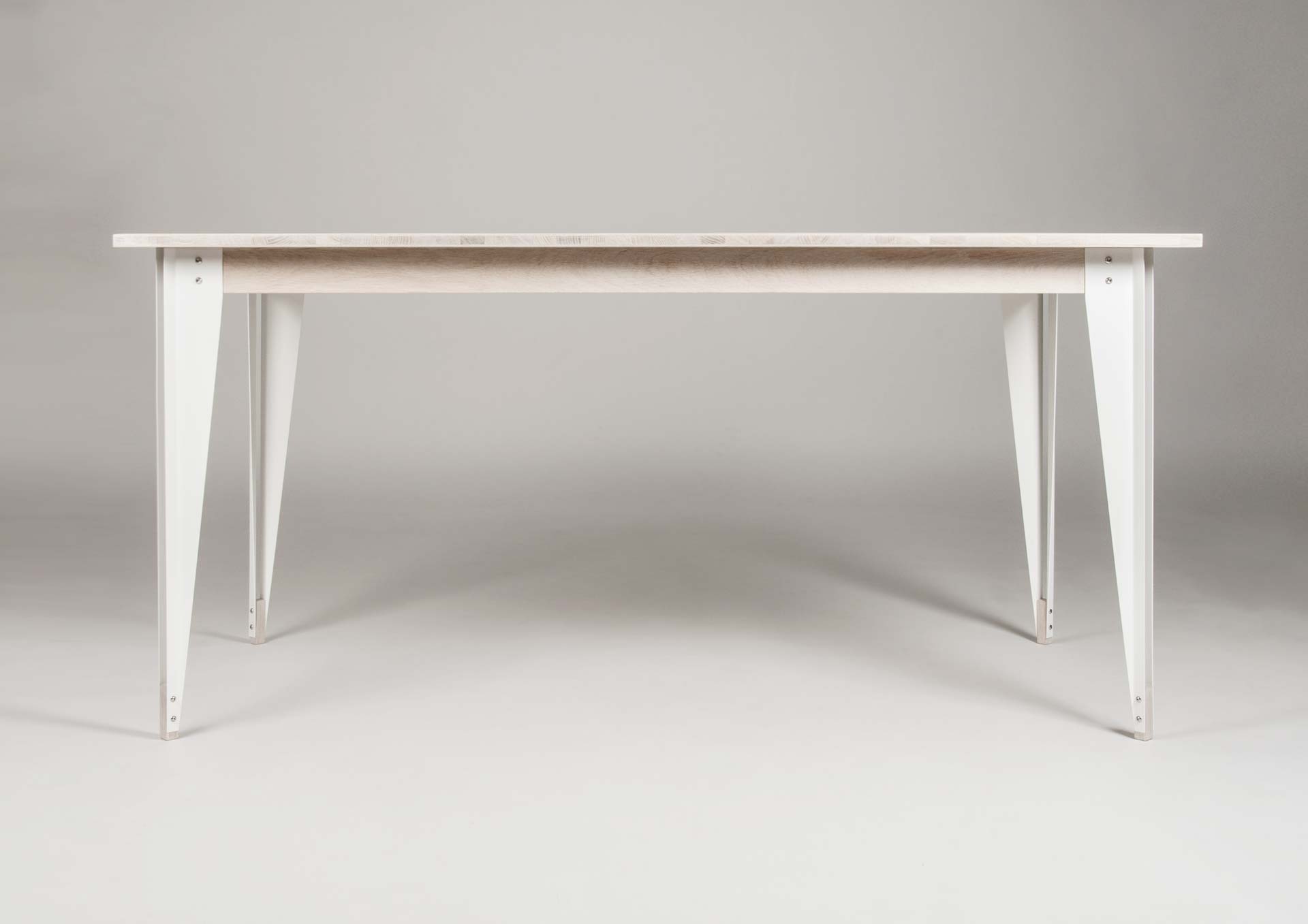ATEK
• tisch •
Material
• Eiche Dreischichtplatte gewachst, weiß
• Stahl pulverbeschichtet, weiß
Maße
• L x B x H in mm, 1600 x 800 x 760
>> die Verbindung zu Dekonstruieren, ohne die Anmutung des klassischen Tisches in Frage zu stellen <<
Ich sehe in einem Tisch nicht nur ein Gebrauchsgegenstand. Mich interessiert sofort die Konstruktion, ich denke darüber nach, wie er gebaut wurde. Dieser Frage bin auch bei meiner Arbeit ATEK nachgegangen. Wie wird ein klassischer Tisch gebaut, was macht ihn aus? Die Stollen- Zargenverbindung, ein bewährtes Konstruktionsprinzip, gilt für mich dabei optisch wie auch technisch als Ideal. Diese Verbindung zu Dekonstruieren, ohne die Anmutung des klassischen Tisches in Frage zu stellen war mir Aufgabe und Problematik zugleich.
>> Volumen, Fläche oder Freiraum? – je nach Blickwinkel wird diese Frage neu beantwortet <<
An den Stellen der Stollenverbindungen entstehen zwischen den Zargen Freiräume. Zwei gekantete Stahlbleche umschließen diese, nehmen Kräfte, die auf den Tisch wirken auf und führen diese weiter zum Boden. Dort werden sie verbunden. Hierdurch und durch das Verleimen von Tischplatte und Zargen entsteht eine geschlossene, stabile Konstruktion. Die gewinkelten Stahlbleche und Freiräume kreieren ein optisch spannendes Konstrukt – Volumen, Fläche oder Freiraum? – je nach Blickwinkel wird diese Frage neu beantwortet.
ATEK
• tisch •
material
• oak three-layer wood panel waxed, white
• steel powder-coated, white
dimensions
• L x W x H in mm, 1600 x 800 x 760
>> deconstructing this connection without questioning the appearance of the classic table <<
In a table I don‘t just see an object of commodity. I am immediately interested in how it was built and how its particular construction makes it stable. This question was at the root of my work ATEK. Why is a classic table built the way it is? The traditional table leg and skirt frame connection, a proven design principle, is a technical as well as aesthetic ideal – deconstructing this connection without questioning the appearance of the classic table was both my challenge and inspiration.
>> Volume, surface, or empty space? – depending on the perspective this question is answered anew <<
In ATEK, four empty spaces emerge where normally the table legs are – between the four sections of the skirt frame. Two bent sheets of metal surround these spaces, absorbing the forces that act on the table, and leading them to the ground where they connect again. This, in addition to the connection of the table top to the skirt frame, creates a closed and stable construction. The angled metal sheets and free spaces create an intriguing visual construct – volume, surface, or empty space? – depending on the perspective this question is answered anew.







